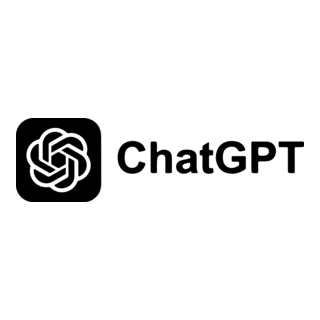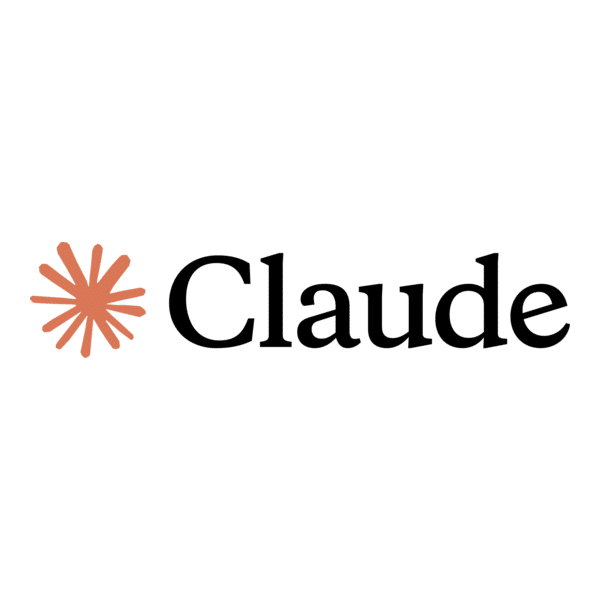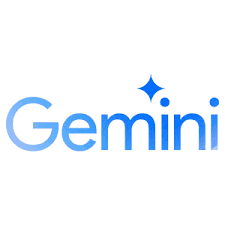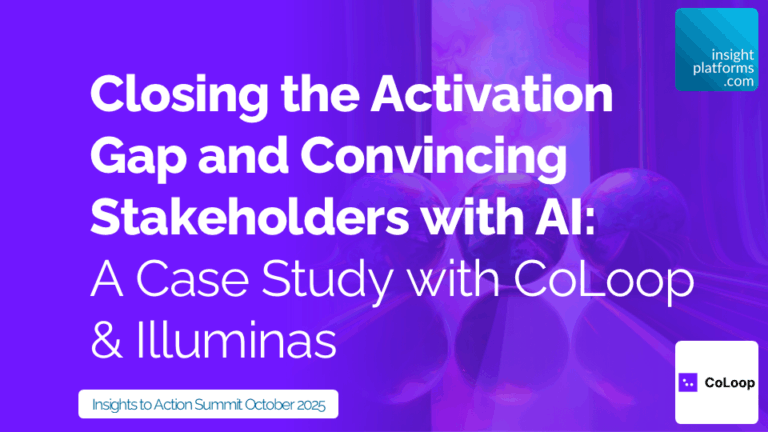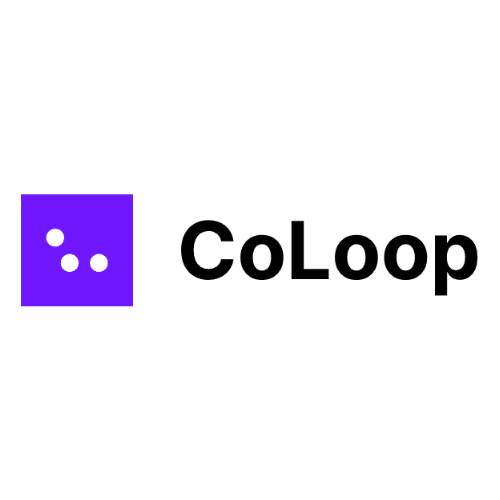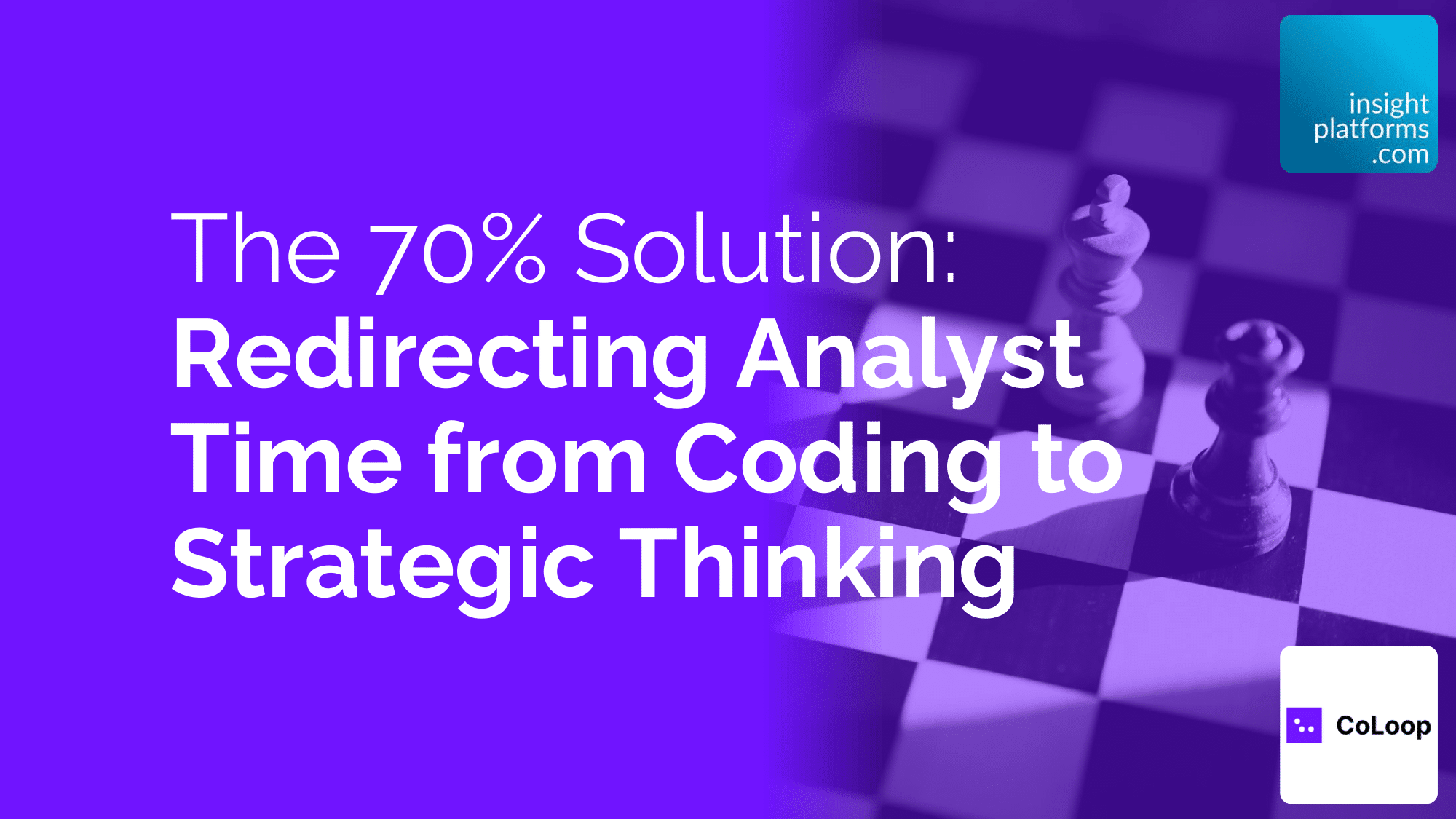
The 70% Solution: Redirecting Analyst Time from Coding to Strategic Thinking
By CoLoop
- article
- Agile Qualitative Research
- AI
- AI Agents
- Behavioural Economics
- Concept Testing
- Generative AI
- Online Qualitative
- Qualitative Data Analysis
- Qualitative Research
- Survey Research
- Text Analytics
- User Experience (UX) Research
- Transcription
What would your qualitative research team do with 70% more time?
For agencies adopting AI-powered analysis platforms, this is not a hypothetical question. Manual coding and transcript analysis, which traditionally consumed the majority of analyst hours on qualitative projects, can now be dramatically accelerated. The question becomes: how should research professionals reinvest this time to deliver greater value?
This article covers part of the webinar “Closing the Activation Gap and Convincing Stakeholders with AI: A Case Study with CoLoop & Illuminas”. Rewatch the webinar here:
Closing the Activation Gap and Convincing Stakeholders with AI: A Case Study with CoLoop & Illuminas
The Manual Coding Burden
Qualitative research has always been labour-intensive. Dr. Tracy Tuten, VP of Qualitative Research at Illuminas, describes the traditional workflow: “In the past, the analysis portion of a qualitative research project was very manual. I would code themes across transcripts. Sometimes I would use tools like MaxQDA, particularly when we had a large amount of structured data because oftentimes our global projects may have more than 30 in-depth interviews, transcripts from more than 30 to as many as 75 participants in them”.
The time commitment for projects of this scale is substantial. Researchers spend hours, often days or weeks, working through transcripts line by line, identifying themes, extracting relevant quotes, and building interpretive frameworks. For some projects, teams would parse quotes and verbatim in Excel, adding additional manual steps to an already time-consuming process.
This manual burden creates a fundamental constraint: the more time analysts spend on mechanical coding tasks, the less time they have available for higher-value activities, such as strategic thinking, client collaboration, and insight activation.
The 70% Shift
Since adopting CoLoop, the AI-powered research platform, Illuminas has experienced what Tuten describes as “70% savings in the time required for analytical processes and qualitative data”.
This is not a marginal improvement. It represents a fundamental reallocation of how research professionals spend their working hours. The question then becomes strategic: what should fill that reclaimed time?
Reinvesting in Research Design and Methodology
With analysis no longer consuming the majority of project hours, researchers can invest more deeply in the front end of projects. As Tuten explains, the time savings allow “more time that we can spend on design and methodology”.
Thoughtful research design becomes increasingly important in complex business environments. B2B research, for instance, often involves navigating intricate layers of stakeholders, understanding organisational decision-making processes, and designing methodologies that capture both rational and emotional dimensions of purchase decisions.
The ability to invest more time in methodology means researchers can better tailor approaches to specific business challenges, think more carefully about sampling strategies, and design discussion guides that probe more effectively into the questions clients actually need answered.
Deepening Client Partnership
Perhaps the most significant reallocation of time goes toward client collaboration. Tuten notes that time savings enable “more time that we can spend in partnership with the clients”.
This partnership takes multiple forms. With analysis happening more quickly, agencies can invite clients into live collaborative sessions where insights are discovered together rather than presented after the fact. These sessions require facilitation skills, business acumen, and the ability to guide productive conversations about data and its implications.
As Tuten describes: “We didn’t just present findings and present themes to the client. We discovered these themes with the client. Because of the way CoLoop functions, we’re able to essentially have a conversation with the client while we’re interacting in CoLoop with all of the data and the transcripts”.
These collaborative sessions represent high-value analyst time. They require expertise, judgment, and the ability to synthesise information in real time while managing stakeholder dynamics and building consensus around interpretations.
For one Fortune 100 technology client, this collaborative approach fundamentally changed the relationship. “They didn’t want just the ‘what’ in the report”, Tuten explains. “They also want to see the ‘why’ behind those decisions. And this really became like a turning point for us in terms of what we could do with CoLoop collaboratively with the client”.
Elevating Reporting and Storytelling
Time savings also flow into “reporting and activation of insights”, as Tuten notes. While reports may seem like a traditional deliverable, the quality of reporting matters enormously in determining whether insights actually drive change.
With more time available, researchers can focus on crafting narratives that resonate with specific audiences, developing compelling ways to present findings, and ensuring recommendations are genuinely actionable rather than generic.
The ability to invest in reporting quality becomes particularly important when research uncovers challenging or unexpected findings. The skill lies not just in identifying what the data says, but in presenting it in ways that stakeholders can accept and act upon.
Focusing on Activation
Beyond the report itself, activation represents the ultimate measure of research value. Insights that sit on a shelf deliver no return. The question becomes: how can researchers ensure their work actually influences decisions and drives organisational change?
This requires time and attention. It means understanding stakeholder concerns, addressing potential objections, building buy-in across organisational layers, and sometimes participating in implementation discussions to ensure insights inform execution.
The collaborative analysis approach helps with activation by building alignment during the research process rather than after. As Tuten describes: “CoLoop allows us to collapse analysis and alignment into the same moment. So our clients have a transparent view of our thinking and our methodology, and they’re able to ask questions. We’re able to immediately align right there in real time as we continue that analysis process together”.
When stakeholders participate in discovering insights, those findings arrive with built-in momentum and buy-in. But ensuring this happens still requires skilled facilitation and relationship management, activities that benefit from the time that AI-powered tools free up.
Strategic Thinking and Interpretation
Jack Bowen, CEO at CoLoop, articulates the broader principle: “I’ve always thought that the biggest value adds are really around that interpretation, the strategy, and the communication. And what I want to see AI do in the future is really remove a lot of the drudgery so that we can spend more of our time actually thinking about these problems and bringing our unique experience and insight to solve issues that businesses and clients are facing”.
This gets to the heart of where human judgment remains essential. AI can surface patterns, retrieve relevant quotes, and process large volumes of text quickly. But interpreting what those patterns mean in a specific business context, understanding organisational politics, knowing when to push back on stakeholder assumptions, and crafting strategies that account for real-world constraints all require human expertise.
The value of experienced research professionals has never been their ability to manually code transcripts. It lies in their capacity to navigate ambiguity, synthesise complex information, understand business contexts, and translate insights into actionable strategies.
Implications for Agency Business Models
The 70% time savings raise important questions about how agencies position and price their services. If clients traditionally associate research value with analyst hours, how should agencies communicate value when projects take less time?
The answer lies in shifting the conversation from inputs to outcomes. The value delivered is not hours spent coding, but the quality of insights generated, the strength of client relationships, the effectiveness of activation, and ultimately the business impact achieved.
As Tuten notes about their client relationship: “We have built a partnership in research with the client”. This partnership, enabled by having more time to collaborate and think strategically, represents a different and arguably higher form of value than simply delivering reports.
The Human Element
Throughout discussions about AI and efficiency, the consistent theme is that technology should amplify rather than replace human judgment. As Jack emphasises: “AI should never replace that analysis, but in fact, it should really invite collaboration”.
The 70% time saving is valuable precisely because it allows researchers to spend more time on activities that require human skills, such as building relationships, facilitating difficult conversations, interpreting ambiguous signals, understanding organisational contexts, and ensuring insights drive real change.
Tuten’s reflection captures this well: “Using CoLoop largely removed the barriers to collaborating with clients and bringing them along in that process”.
Looking Forward
As AI-powered tools continue to evolve, the pattern seems clear. Manual, repetitive tasks will increasingly be automated or accelerated. This will continue to free up researcher time and attention.
The opportunity for research professionals is to consciously direct that reclaimed time toward activities that deliver distinctive value: strategic thinking, client partnership, methodological innovation, and insight activation. These are areas where human judgment, experience, and relationship skills remain essential.
For clients, the shift offers the potential for faster insights combined with a deeper strategic partnership. Rather than trading quality for speed, the best applications of AI in research deliver both improved efficiency and elevated outcomes.
The 70% solution is not really about the time saved. It is about what researchers choose to do with that time, and whether agencies can successfully reposition themselves from report producers to strategic thinking partners who happen to leverage powerful technology in the service of better insights.
This article covers part of the webinar “Closing the Activation Gap and Convincing Stakeholders with AI: A Case Study with CoLoop & Illuminas”. Rewatch the webinar here:

